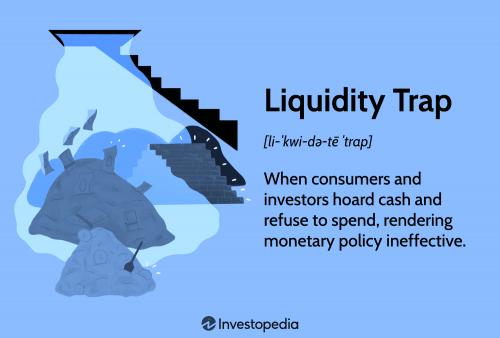Liquidity Trap Explained

The economic well-being of a nation is influenced by factors such as inflation, capital flows, and government expenditure. The economy enters a liquidity trap when these measures fail to stimulate growth. At this time, people decide to liquidate their assets and hold onto cash rather than invest in stocks and banks.
How To Spot The Trap
The liquidity trap is a phenomenon where traditional monetary policies fail to improve the economic downturn, and people fail to respond to government attempts to recover the economy.
During the trap, interest rates drop to encourage borrowing and spending, but people prefer to keep their money in cash and avoid spending. People also suspend trading activity due to insufficient market returns, and speculators avoid trading in markets, believing prices will bounce back.
Indications of a liquidity trap involve an increase in savings, a decrease in interest rates, minimal price inflation, and economic indicators signalling a decline. Individuals are withdrawing their funds from banks and holding it in the form of cash, resulting in reduced spending and a decrease in bank deposits. Reducing borrowing costs by the government is intended to boost the economy, yet it does not encourage individuals who are already saving to spend more.
Low inflation rates can lead to a decrease in overall national output and business capital, while a prolonged liquidity trap can lead to an economic recession paralysing the entire nation.
How To Prevent The Trap
Liquidity traps are unique to each economy and cannot be addressed by one-size-fits-all solutions. Alternative methods include increasing interest rates on investment and bank deposits, lowering prices to encourage spending on essentials, and adopting a zero-interest policy on loans.
Increasing interest rates can motivate people to invest in securities like bonds and bank savings accounts, while lower prices encourage people to buy essentials, helping the economy recover. A zero-interest policy on loans allows banks to offer loans at a negative percentage, paying borrowers while giving away loans.
Bottom Line
The liquidity trap occurs when traditional monetary policies fail to revive a stagnating economy, necessitating the implementation of alternative methods like negative loan interest rates and lowering product prices and living costs.
Post Your Ad Here
Comments